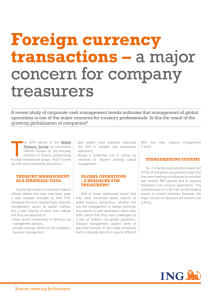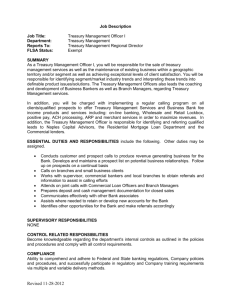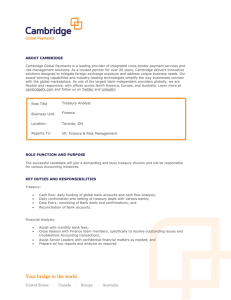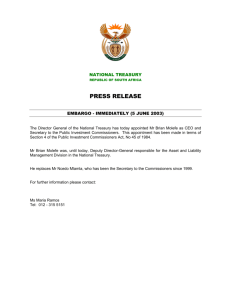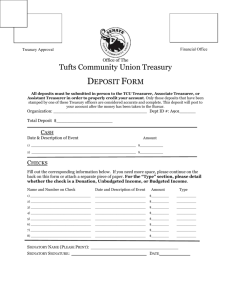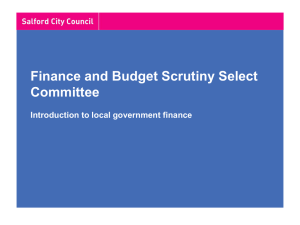FMS Bank Reconciliation To
advertisement
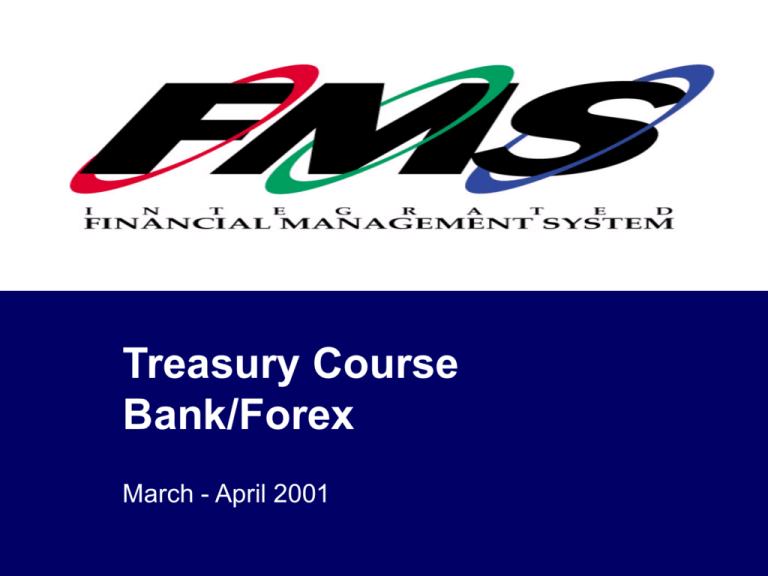
Treasury Course Bank/Forex March - April 2001 Introduction • Audience – Treasury Personnel performing transactions in the FI-Bank sub-module of SAP R/3. • Duration: 1.5 hours Course Objectives At the conclusion of this course, you will be able to: • Describe the role of Treasury in the FI process • Describe the bank reconciliation process • Maintain the bank master data • Maintain the foreign exchange table Course Content Preface • Lesson 1 • Lesson 2 Summary Treasury’s Role in FI Bank Related Transactions Accounting Related Transactions Treasury’s Role in FI AP TREASURY BANKS GENERAL ACCTG. AR • • • • • • • • • Maintain bank master data GL master data request Process deposits Check printing Bank debit/credit advice Loan acquisition/payment Money market placements “Sweep” accounts Accrued/ prepaid interest Lesson 1: Bank Related Transactions Contents: • Bank Reconciliation Process • Bank Master Data Concepts Bank Reconciliation Process Treasury Bank Master Data Maintenance General Accounting Process Deposit Bank Reconciliation G/L Account Automatic Clearing Bank Master Data Maintenance Treasury Create Bank key - keeps the bank and branch information - not specific to a company code Accounting Create House Bank - consists of 5 characters only - also keeps the bank and branch information - created for a specific company code Accounting Create Bank Account (Account ID) - keeps the bank account information - includes the type of account, the account number, the G/L code and the currency - created by company code and house bank combination Transactions FI01 FI02 FI03 FI04 FI06 FI12 S_P99_41000166 S_P00_07000008 Create a Bank Master Record Change a Bank Master Record Display a Bank Master Record Display Changes in Bank Master Record Set Deletion Flag on Bank Master Record Generate List of House Banks Display Bank Directory Display of Bank Changes Exercise At the end of these exercises, you will be able to: • Create, change and display bank master records • Generate lists and reports Lesson 2: Accounting Related Transactions Contents: • Request for GL Master Data • Request for Journal Adjustment (Treasury) • Request for Journal Adjustment (General) • Maintain Foreign Exchange Table Request for GL Master Data/Journal Adjustment/Treasury Entries Requestors Generate request using Lotus Notes Form No Unit Head Review Request Submit Request? For Treasury, Request will first go to Supervisor and then to the Manager. Yes Financial Reporting Manager No Review submitted Request Approve Request? Yes General Accounting Staff Maintain data in system or Encode in system Exchange Rate Types • Exchange Rate Types allow multiple rates to be stored and used for different purposes. • You can use Exchange Rate Types to define a bank buying and selling rate, an average rate for translation of foreign currency amounts, rates for financial statement reports. • M = Current Rate (for daily processing) • 1001 = Current Rate (for consolidation reports) • 1002 = Average Rate (for consolidation reports) • 1003 = Historical Rate (for consolidation reports) Exchange Rate Table • Use bank opening rate • Daily maintenance • Use bank opening rate • Use average rate for period • Use original rate of trans. • Monthly maintenance • Maintain USD to PHP • Maintain Lira to PHP Transaction S_BCE_68000174 Enter Translation Rates Summary You are now able to: • • • • • Describe Treasury’s role in the FI process Describe the Bank Reconciliation Process Maintain bank master data Use Lotus Notes forms to generate requests Maintain Foreign Exchange table Congratulations! • You have just completed the Bank and GL portion of the Treasury Course.
